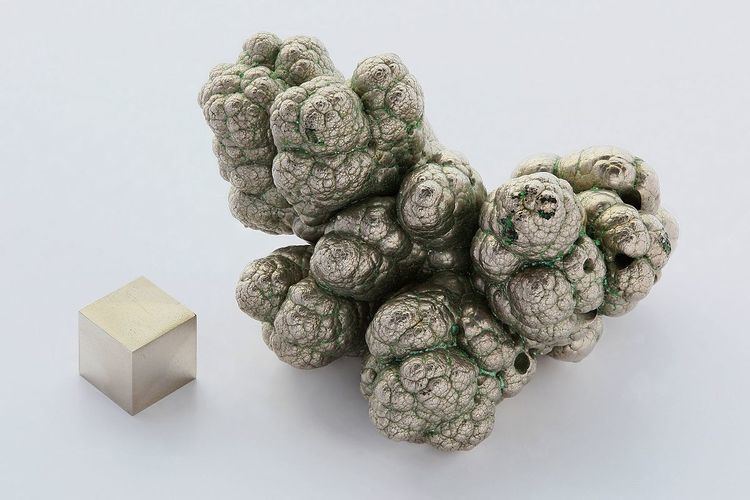 | ||
Group 10, numbered by current IUPAC style, is the group of chemical elements in the periodic table that consists of nickel (Ni), palladium (Pd), platinum (Pt), and perhaps also the chemically uncharacterized darmstadtium (Ds). All are d-block transition metals. All known isotopes of darmstadtium are radioactive with short half-lives, and are not known to occur in nature; only minute quantities have been synthesized in laboratories.
Contents
Like other groups, the members of this group show patterns in electron configuration, especially in the outermost shells, although for this group they are particularly weak, with palladium being an exceptional case. The relativistic stabilization of the 7s orbital is the explanation to the predicted electron configuration of darmstadtium, which, unusually for this group, conforms to that predicted by the Aufbau principle.
Chemistry
Darmstadtium has not been isolated in pure form, and its properties have not been conclusively observed; only nickel, palladium, and platinum have had their properties experimentally confirmed. All three elements are typical silvery-white transition metals, hard, and refractory, with high melting and boiling points.
Properties
Group 10 metals are white to light grey in color, and possess a high luster, a resistance to tarnish (oxidation) at STP, are highly ductile, and enter into oxidation states of +2 and +4, with +1 being seen in special conditions. The existence of a +3 state is debated, as the state could be an illusory state created by +2 and +4 states. Theory suggests that group 10 metals may produce a +6 oxidation state under precise conditions, but this remains to be proven conclusively in the laboratory other than for platinum.
Applications
The group 10 metals share several uses. These include:
Biological role and toxicity
Nickel has an important role in the biochemistry of organisms, as part of the active center of enzymes. None of the other group 10 elements have a known biological role, but platinum compounds have widely been used as anticancer drugs. Aside from nickel, the elements are toxic for organisms.
